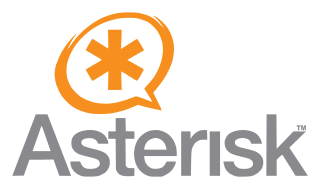Example
In the Asterisk CLI one can do a lookup by hand to test if a DUNDi configuration works.
asterisk1*CLI> dundi lookup 301@priv bypass 1. 0 IAX2/priv:ByWFbOGKgGmZbM43BJHSZw@192.168.1.2/301 (EXISTS) from 00:0c:29:d2:d8:ec, expires in 3600 s DUNDi lookup completed in 113 ms
The above DUNDi lookup tells the PBX to ask the known peers if they know how to reach extension 301 in the "priv" network. The answer consists of 6 parts:
- The used protocol to communicate is IAX2.
- The context-name is "priv".
- The secret key of the PBX, which can redirect you to extension 301 is ByW[...]HSZw (this changes periodically)
- The address of this PBX is 192.168.1.2 (or some domainname, should be reachable by the calling party)
- The extension to call is 301 (this can be different from what you asked for, e.g. when calls from the outside are not allowed directly to an internal extension)
- "EXISTS" tells us the PBX is advertising this number. It is possible the PBX advertises a lot more extensions than really are connected, so it is no guarantee the extension can be reached.
In order to prevent the network from overloading and at the same time keep the responses as quick as possible, the involved peers will cache the lookups they see. Because the used keys may become invalid after some period, each lookup has some expiry date. This defaults to one hour.
When no context is given with a lookup, DUNDi defaults to the E.164 context. This means you are looking for normal (international) phone-numbers, like 0031201234567 (some bogus number in Amsterdam, the Netherlands) In order to do so, you have to peer with at least one other peer in the E164 trust group. The peers in this group are bound to the Digium GPA (Digium General Peering Agreement) (PDF)
The Domain Name System (DNS) is a hierarchical and distributed naming system for computers, services, and other resources in the Internet or other Internet Protocol (IP) networks. It associates various information with domain names assigned to each of the associated entities. Most prominently, it translates readily memorized domain names to the numerical IP addresses needed for locating and identifying computer services and devices with the underlying network protocols. The Domain Name System has been an essential component of the functionality of the Internet since 1985.
Voice over Internet Protocol (VoIP), also called IP telephony, is a method and group of technologies for voice calls for the delivery of voice communication sessions over Internet Protocol (IP) networks, such as the Internet.
Telephone number mapping is a system of unifying the international telephone number system of the public switched telephone network with the Internet addressing and identification name spaces. Internationally, telephone numbers are systematically organized by the E.164 standard, while the Internet uses the Domain Name System (DNS) for linking domain names to IP addresses and other resource information. Telephone number mapping systems provide facilities to determine applicable Internet communications servers responsible for servicing a given telephone number using DNS queries.
Inter-Asterisk eXchange (IAX) is a communications protocol native to the Asterisk private branch exchange (PBX) software, and is supported by a few other softswitches, PBX systems, and softphones. It is used for transporting voice over IP telephony sessions between servers and to terminal devices.

Asterisk is a software implementation of a private branch exchange (PBX). In conjunction with suitable telephony hardware interfaces and network applications, Asterisk is used to establish and control telephone calls between telecommunication endpoints such as customary telephone sets, destinations on the public switched telephone network (PSTN) and devices or services on voice over Internet Protocol (VoIP) networks. Its name comes from the asterisk (*) symbol for a signal used in dual-tone multi-frequency (DTMF) dialing.

A business telephone system is a telephone system typically used in business environments, encompassing the range of technology from the key telephone system (KTS) to the private branch exchange (PBX).
PPPD is the Point-to-Point Protocol daemon which is used to manage network connections between two nodes on Unix-like operating systems. It is configured using command-line arguments and configuration files.
Direct inward dialing (DID), also called direct dial-in (DDI) in Europe and Oceania, is a telecommunication service offered by telephone companies to subscribers who operate private branch exchange (PBX) systems. The feature provides service for multiple telephone numbers over one or more analog or digital physical circuits to the PBX, and transmits the dialed telephone number to the PBX so that a PBX extension is directly accessible for an outside caller, possibly by-passing an auto-attendant.
In telecommunication, a dial plan establishes the permitted sequences of digits dialed by telephone subscriber and the manner in which a telephone switch interprets these digits within the definitions of the prevailing telephone numbering plan. Dial plans in the public switched telephone network referred to as dialing procedures.

Caller ID spoofing is a spoofing attack which causes the telephone network's Caller ID to indicate to the receiver of a call that the originator of the call is a station other than the true originating station. This can lead to a display showing a phone number different from that of the telephone from which the call was placed.

Jingle is an extension to XMPP which adds peer-to-peer (P2P) session control (signaling) for multimedia interactions such as in Voice over IP (VoIP) or videoconferencing communications. It was designed by Google and the XMPP Standards Foundation. The multimedia streams are delivered using the Real-time Transport Protocol (RTP). If needed, NAT traversal is assisted using Interactive Connectivity Establishment (ICE).
Mobile VoIP or simply mVoIP is an extension of mobility to a voice over IP network. Two types of communication are generally supported: cordless telephones using DECT or PCS protocols for short range or campus communications where all base stations are linked into the same LAN, and wider area communications using 3G or 4G protocols.
The SIP URI scheme is a Uniform Resource Identifier (URI) scheme for the Session Initiation Protocol (SIP) multimedia communications protocol. A SIP address is a URI that addresses a specific telephone extension on a voice over IP system. Such a number could be a private branch exchange or an E.164 telephone number dialled through a specific gateway. The scheme was defined in RFC 3261.
FreePBX is a web-based open-source graphical user interface (GUI) that manages Asterisk, a voice over IP and telephony server.

Elastix is a unified communications server software that brings together IP PBX, email, IM, faxing and collaboration functionality. It has a Web interface and includes capabilities such as a call center software with predictive dialing.
A softphone is a software program for making telephone calls over the Internet using a general purpose computer rather than dedicated hardware. The softphone can be installed on a piece of equipment such as a desktop, mobile device, or other computer and allows the user to place and receive calls without requiring an actual telephone set. Often, a softphone is designed to behave like a traditional telephone, sometimes appearing as an image of a handset, with a display panel and buttons with which the user can interact. A softphone is usually used with a headset connected to the sound card of the PC or with a USB phone.
VaxTele SIP Server SDK is a complete development toolkit, which allows software vendors and Internet telephony service providers (ITSP) to develop SIP Server and (SIP) Session Initiation Protocol based VoIP systems for Microsoft Windows to install computer to computer voice chat, chat rooms, IVR systems, call center services, calling card services, dial/receive computer to PSTN and mobile phone calling services.
The 1100-series IP phones are 6 different desktop IP clients manufactured by Avaya for Unified communications which can operate on the SIP or UNIStim protocols. The SIP Firmware supports presence selection and notification along with secure instant messaging.

The FreePBX Distro is a freeware unified communications software system that consists of a graphical user interface (GUI) for configuring, controlling, and managing Asterisk PBX software. The FreePBX Distro includes packages that offer VoIP, PBX, Fax, IVR, voice-mail and email functions.





